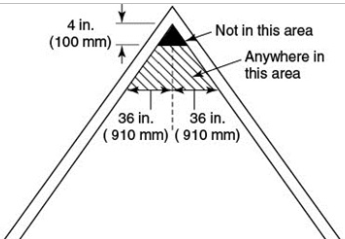Smoke & Heat Detector Installation; How to Properly Advise Your Clients


A home inspector is not only looking for defects and educating their clients, they are looking for safety items. Probably the most important safety items are smoke / heat detectors. It is amazing to me how many homes do not have them installed, or installed improperly. The National Fire Protection Association (NFPA) outlines recommendations for smoke / heat detector placement. However, some municipalities require other standards. Should they be located in the garage, kitchen, utility room, and should they be interconnected? We know that the two most common alarms are Ionization and Photoelectric. Ionization detectors will sense a hot fire, not a smoky one. Photoelectric will sense a fire that emits smoke, but not necessarily a very hot fire with little smoke. Because of this, home inspectors should recommend their clients have a combination smoke detector. Look for the letter “P” and the radioactive symbol. To see a great video outlining the difference between the two CLICK HERE. So how should you advise your clients on where to install and what type of detectors to use?
- Smoke detectors should be located on the ceiling not less than 4 inches from the side walls or on the sidewalls between 4 and 12 inches from the ceiling
- For peaked or sloped ceilings; smoke detectors should not be placed within the first 4 inches of the peak and no more than 3 feet down from it, measured horizontally (see graphic)
- For most applications detectors should be interconnected (wired or wireless). However, they are not recommended in some commercial applications because locating the fire may be hindered unless there is a control station
- Detectors that are hardwired should be on a primary lighting circuit. They can no longer be on a dedicated circuit
- For solid joist construction (like many basements) the detectors shall be mounted on the bottom of the joist (not the side or on the subfloor) (A ceiling shall be treated as a smooth ceiling if the beams project no more that 4 inches below the ceiling
- In bedrooms or sleeping areas, detectors should be located on the ceiling near the door
- All hallways, and near bedrooms
- In or near living rooms, family rooms, and dens
- All common areas, hallways, and stairways
- In basements; on the ceiling at the bottom of the staircase
- Smoke detectors should not be located in the kitchen, bathrooms, garages, or unheated spaces where humidity and temperature changes might affect a detectors operation
- Heat detectors can be installed at least 10 feet away from cooking areas and in garages
- All detectors should have battery backup
- ADA detectors use strobe lights and vibration equipment
Remember. Many municipalities may have different requirements than outlined here.
Related Articles:
Want To Learn More? Click HERE to Search Our Full Database Of Home Inspector Newsletters.



